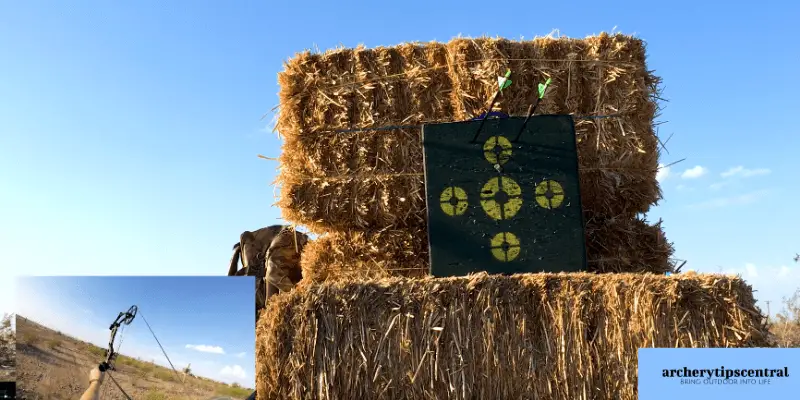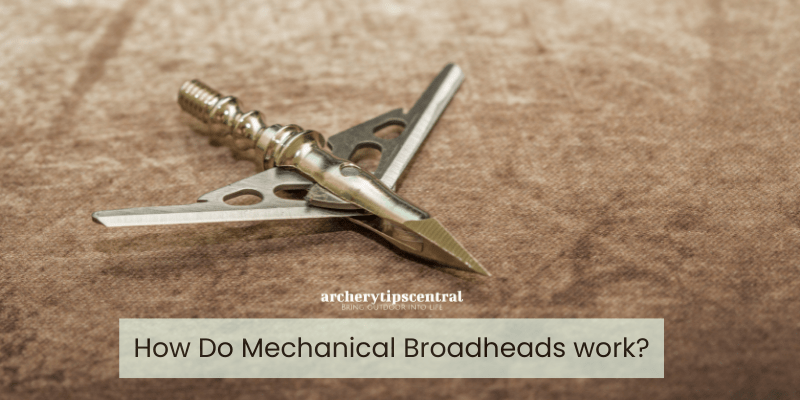Mechanical broadheads often fly like field points. But that might not always be the case. Why is that? To know that, exploring how these heads work is an eye-opener.
Depending on the broadhead’s functionality, bow hunting success will be visible.
So you need to know, how does a mechanical broadhead work? Generally, a mechanical broadhead works by placing a set of dynamic blades on impact with the target. In terms of flight accuracy, these can ensure better results and hit exactly the target. Blades can be folded inside the head during the flight too!
Spelled out a few things above! But trust us, these all combined don’t complete the whole working mechanism. Don’t worry, we are jumping into the core right now!
How Do Mechanical Broadheads Work?
The blades of a mechanical broadhead typically move dynamically when they impact the target. This kind of mechanism suits hunting at medium and bigger games.
Once you track down the mechanism of mechanicals, things get clearer. So, how does it evolve around hunting?
A mechanical broadhead basically works under these steps. Such as:
Step 1
Converting the bow’s kinetic energy into lethal momentum.
Step 2
Improving flight accuracy and maintaining the trajectory via hiding the blades partially and fully.
Step 3
Splintering the surface with the topmost penetration.
Step 4
Secondary trauma at its maximum and inner-controlled expansion.
Step 5
Finally, Immense exit injury volume.
Mechanical broadheads come quite accurately in field points. With their slightly exposed wing blades, mechanicals gets more dominance in air flight.
Meanwhile, this type accepts a set screw in the ferrule that brings a threaded hole. Using an Allen wrench gets the screw threading nicely into the ferrule. Moreover, you don’t need it over-tightening at all.
Why Are Mechanical Broadheads Different From Fixed Blade Broadheads?
As a primary target of hunting, we want broadheads working fine and taking the target down perfectly, don’t we?
Over time, types of broadheads have been growing in number, so do they develop their specifications, etc. If you explore things broadly, two types- fixed and mechanical broadheads ruling the market will be visible.
What special traits have made the mechanical type supreme compared to fixed ones are-
- More shooting accuracy
- Less air friction
- Larger cutting diameter, and a lot more.
Now, you know a mechanical broadhead can keep itself confined in a compact area while flying. As a result, less air friction will be measured.
Meanwhile, mechanicals brings a patented lock and pivotal design too. With the help of this technology, arrows maintain a straight-through path while flying.
The moment it hits the target, you can see it turning into two inches of razor blades.
And after all, the impact being so effective has made this broadhead supreme. This much creativity is missed at fixed broadheads.
Along with its accuracy, blades being able to be folded in during the flight is the key mechanism. Creating a shorter aerodynamic drag in the rear part of the arrow keeps the flight balanced.
That’s the reason, you will mostly see all the movement caused in the back instead of the arrow’s tip.
This means mechanicals can hide its blade during the flight which is absent from fixed ones.
In the meantime, carrying twice a bigger cutting diameter than a typically fixed blade broadhead creates more successive chances in hunting.
As the end product, more accurate shots closer to the target become possible. Got an idea of how much inventiveness a mechanical broadhead can produce?
Fixing And Tuning Your Mechanical Broadheads

Ensure making one mechanical broadhead just for the sake of practicing is necessary. Keep the blades marked with a marker. So, anytime you can remember, it’s just for practice.
Also, don’t forget to put the arrow on a spin tester. This test ensures it’s concentrically aligned to the broadhead ferrule. What if the head tip isn’t aligned perfectly?
Use a slight amount of finger pressure to realign it. Now, take your chosen mechanical broadhead and shoot a few warm-up arrows with field points. In some cases, you might not find it flying like field points.
Experimenting with nock and fletching orientation can be a nice way to fix it. Also, minor tweaking of the arrow’s rest horizontal position is allowed.
Read more: How to sharpen mechanical broadheads?
FAQs
Can I utilize mechanical broadheads with a crossbow?
Yes! Especially, mechanical broadheads with front deploying ability offer users greater cutting diameter. As a result, handling through a crossbow becomes easier here compared to fixed broadheads. Along with that, you will find greater wound channel damage via mechanicals.
Do mechanical broadheads open on impact?
Yes, these are designed to open on impact for creating broader wounds along with deeper penetration. Besides, you will find them leaving more blood trail.
Are mechanical broadheads good for elk?
Just like fixed blade broadheads, mechanicals is good for taking elk down. Typically, mechanical broadheads offer larger cutting diameters creating a good scope to hunt animals like elk.
Final Words
Now, things related to a mechanical broadhead’s work mechanism get clearer to you.
However, you may find inaccuracy somehow over its working process. Worry not, get it fixed and nicely tuned DIY won’t be an issue indeed.
Happy hunting!

